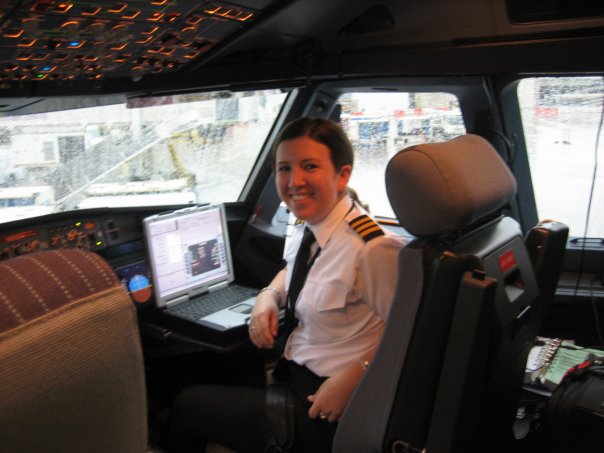99% of the time my flights are really uneventful. But the other 1% of the time? Boy oh boy.
Last week I flew one of our most annoying pairings. Out of ACY we fly a Boston turn back-to-back with a Myrtle Beach turn. I usually love short hops. Unfortunately with 3 quick turns, if something goes wrong at any point in the day, you end up running behind the whole time! Additionally you rarely end up finishing this pairing before midnight.
Unfortunately, this was during that nasty weather system last week that resulted in so many headaches for pilots all around the country. Our flight, which is supposed to depart at 1608 local, was already delayed until 1700 by the time I checked in for the flight. After doing my walk-around I called up clearance to get our route clearance and estimated departure time. Now we'd been delayed to 1740! Ouch. On a day with 3 30-minute turns, we're already running seriously late.
The problem was, of course, the weather. Low ceilings in Boston had caused a ground delay program to be issued. This happens whenever an airport cannot handle its normal amount of traffic. By delaying aircraft departures they can meter the amount of traffic inbound, reducing holding times and possible diversions.
We finally departed for Boston at 1750 and were pleased to fly without speed restrictions (our normal cruise is Mach 0.78). I picked up the weather en route to find out the bad news: the fog had arrived. Calm winds, a temperature/dewpoint spread of 1 degree, visibility of 1 1/4 mile and 100 foot overcast ceilings. Uh oh!
We approach Boston and ask the approach controller if they've opened up runway 33L for approaches, which has a CAT II approach (enabling us to fly to lower minimums). Apparently they had not, which was fairly reassuring. If no one was getting in to land, they would've opened up 33L. Instead traffic was landing 22L. We continued taking vectors from approach and realized, after being turned north, then south, then north again, that we were following the conga line of airplanes onto the final approach course. All the while burning straight through our 1000 extra pounds of fuel (Since fuel is still expensive (and it costs fuel to carry fuel), we're typically dispatched with our enroute fuel, reserve fuel as per the FAA regulations, taxi fuel and normally about 1000 pounds extra.). You can view our course on flightaware.com.
The captain decided that if we weren't cleared for the approach with 6500 lbs of fuel remaining that we would have to go to our alternate (in this case, Manchester). We wanted to have enough fuel to reach Manchester and shoot two approaches. Aircraft ahead of us were landing, but as anyone who's been in fog can tell you, you never know when it's going to suddenly thicken. Fortunately we were cleared for the approach with 6900 pounds of fuel on board. Now all we have to do is see the runway lights at 216' and the runway at 116'! At this point the captain says to me, "I can't stress enough the importance of you seeing those runway lights." No pressure!!
We saw the runway lights at, I'm not kidding, 280'. Another second and we would've had to go around and proceed to our alternate. Visibility at the time was, in RVR, 6000 TDZ, 1800 midpoint, 5000 rollout. Definitely the lowest I've flown in so far!
We proceeded to the gate and turned the airplane in record time! As we taxied out and waited in line for our departure off 22R, we heard 3 or 4 airplanes go around. It's all luck when you're flying into a fogged-in airport!
To make matters worse: we still had 3 legs to go!! The weather back in ACY was super-windy, which is typical for this time of year. I got to land in a 20-knot crosswind, which is not-so-much-fun but I'm getting better at it. Our Myrtle turn, which is usually uneventful, was full of thunderstorms and speed restrictions (into Myrtle!! unheard of). We were so beat on our last leg that we were happy to find out that the winds had calmed and our flight, after dodging a few thunderstorms, was easy. While driving to the hotel (which I got so I wouldn't have to make the 2 hour drive home) I was struck by how fatigued I was. On a day that was perfectly legal, only about 7 hours on duty, done by 1am, 5 hours of flight time, I had never EVER been so fatigued. Goes to show how an 8 hour day, with a low workload, can be easier than a shorter workday with a higher workload.
Thanks for reading :) This is day 7 of 13 for me on reserve (I had my one day off yesterday, I used it to sleep!). I'm looking forward to the end of the week and a few days off!
Monday, November 1, 2010
Subscribe to:
Comments (Atom)
